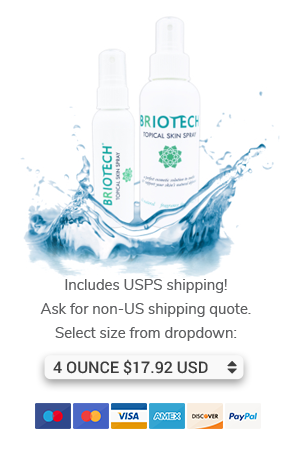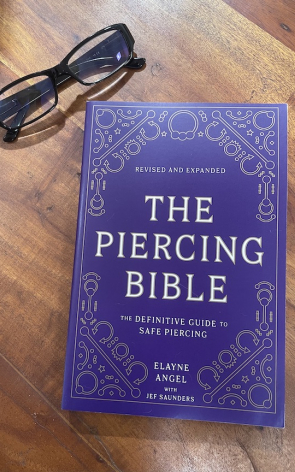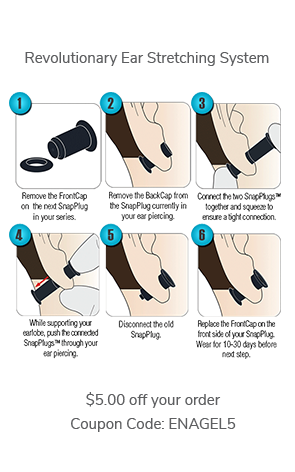Below is an article I wrote for my monthly Q&A column in Pain Magazine, a body-art-industry trade publication. Though it is written for piercers, I thought this might be helpful to piercees as well--especially if you've been instructed by a piercer never to use cotton swabs....
Dear Angel,
I’m aggravated and hope that you can settle a conflict once and for all. I work with a piercer who is convinced that cotton swabs, q-tips, cotton buds, whatever you want to call them, are dangerous and should NEVER be used on or around piercings. He gives me hell about using and suggesting them. I’ve also seen discussions and arguments on forums about this.
I’ve been a professional piercer for much longer than he has, and I’ve never seen any problems that seemed to be caused by them. I really don’t know what the drama is about. Can you settle the debate?
I loved The Piercing Bible and learned so much from it. I can’t wait to read the new edition!
Thanks for your opinion,
B.
Dear B.,
It seems like people are very polarized on this matter. Whenever possible, I am partial to offering advice based on scientific research. The only related empirical evidence I could locate was a study of surgical wounds gently probed with a dry, sterile, cotton-tipped applicator each day during the early postoperative period. The swab group had an infection rate 16 times lower than the control group.[i] I could not find any studies showing complications or damage to wounds from cotton swabs.
Swabs are a standard item in healthcare settings; they are commonly used on wounds and inserted into body orifices. If fiber residue were a safety concern, there would be some literature discussing that, but no such debate has taken place in the wound-care world. Though sterile swabs with tightly packed heads on wooden handles are normally used in medicine, the store-bought version with paper or plastic stems is similar.
I’m the first to admit that human bodies vary and that no single aftercare routine is best for everybody. Countless individual bodily differences and a host of external factors impact each wound healing course. We should be open to the concept that swabs work great for some people and not so well for others.
But there is at least one basic principle we should all be able to agree on. I’m sure no piercer (or healthcare professional) would argue the fact that trauma and wounds don’t mix. As it says in The Piercing Bible: [ii]
RUBBING YOU THE WRONG WAY: FRICTION AND TRAUMA
Physical trauma is one of the biggest dangers to your new piercing…. Repeated trauma leads to inflammation and edema (excess fluid in the tissues that causes swelling), which interferes with local oxygen supply. This reduces your ability to process the wound effectively.
Some piercers are convinced that swabs (or the piercees wielding them) cause trauma. Of course, rough treatment with anything—including a Q-tip—can result in complications, so their use must be gentle to avoid causing damage to delicate healing tissue. As with all advice we impart to our clientele, it is up to us to impress upon them the importance of the things we believe are critical for safe and successful healing. Through both written and verbal aftercare instructions, it should be possible to drive home the point that swabs must be used gently.
Though trauma is a valid concern, it can be addressed with client education. The other worry, as mentioned, regards fibers.
Jef Saunders, contributor to the second edition of The Piercing Bible and a periodic guest writer for this column, did some informal research. He said:
“… the pros of cotton swab use far outweigh the cons. It’s not even kind of close. Does fuzz get wrapped around jewelry from time to time? Sure. Rarely, but it happens. This is a far overblown problem, though. I didn’t see any difference between the fuzz from swabs and the fuzz from non-woven gauze. Actually, that’s not true. I tried a little test with a prong-set gem and found that non-woven gauze got caught easier and left more fuzz behind.”
To quote another colleague, Bethrah Szumski: “I’ve seen WAY more problems from built-up debris from incomplete cleaning than fibers from cotton buds. If someone is having trouble cleaning effectively, I’ll absolutely suggest ‘em.”
This leads us to a brief discussion about piercing care principles. There are some new sections in the aftercare chapter of the Revised & Expanded second edition of the book including, “Irrigation” and “Debridement.” These embody standard medical procedures for wound care:
Wound irrigation is described as the “steady flow of a solution across a wound surface.” In the case of piercings, irrigation is intended to hydrate, gently cleanse, and soften and remove debris, including secretions and crusted matter. It can be done with sterile saline or potable (drinkable) tap water. Depending on local water quality, it may be necessary to rinse off a piercing with something cleaner, such as distilled, purified, or bottled spring water; or tap water that has been filtered or brought to a rolling boil for at least a full minute, and then cooled.
Debridement is the process of removing dead, contaminated, or adherent tissue or foreign material from a wound. Anything that remains, after spraying, washing, or rinsing can impede healing, whether it is body secretions, hair, pet fur, fibers from clothing, swabs, gauze, or other foreign material. Irrigation (essentially rinsing) alone is commonly insufficient to remove all debris, so additional intervention becomes necessary. Crust that is left on poses a double threat: one is trauma because it is rough and can get pressed into the fragile healing tissue. The second is microbial buildup, which carries an increased risk of infection.
Rinsing a piercing long enough and with sufficient force to entirely clear crust from the jewelry can cause trauma in itself. Therefore, after irrigating, any remaining matter must be removed manually. The use of a moistened swab (or gauze) is perfectly reasonable to scrub and wipe away stubborn residue gently. Wetting either material should minimize the shedding of fibers.
Gauze is so soft it generally requires some “backing” to remove tenacious accumulations. That support will likely be a finger—hopefully a well-washed one. Trying to dislodge obstinately affixed crud with a floppy piece of gauze might drive someone to whip out a fingernail just to get the job done. Additionally, certain areas can be hard to reach with even a petite fingertip wielding gauze. In these cases, swabs can be really helpful. Many ear cartilage placements, including forward helix, tragus, and daith piercings, are extremely difficult to debride thoroughly without the use of Q-tips.
Pointed make-up swabs are usually more tightly wound, and their slimmer, shaped tips make them well-suited to removing matter from jewelry, especially in nooks, crannies, and snug spaces.
Excess granulation tissue tends to grow in wet environments. Those are the really red piercing protrusions that look like raw hamburger. So, piercings should be dried carefully after getting them wet. Medical guidance suggests using everything from a clean cloth or tissues[iii] to gauze or paper towels[iv] for drying healing wounds. Based on the cited research study, even using a dry swab is not contraindicated.
Ultimately, if cotton swabs seem effective and helpful in your practice, there is no reason to avoid them. However, it is appropriate to suggest an alternative if specific problems can be attributed to Q-tips and they are not an apparent net benefit. Just be certain to instruct piercees in the safe and regular removal of crusted matter through proper irrigation and debridement.




